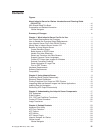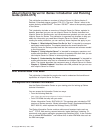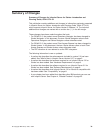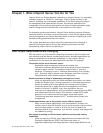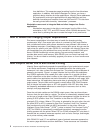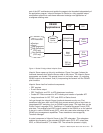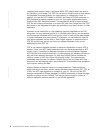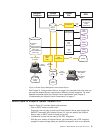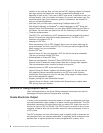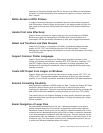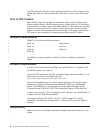
Chapter 1. What Infoprint Server Can Do for You
Infoprint Server for iSeries (hereafter referred to as Infoprint Server) is a separately
orderable program for OS/400 5.1 and higher. Infoprint Server focuses on the
network, extending the considerable capabilities of the iSeries beyond printing to
the management and dissemination of output. As business applications are
re-engineered into e-business applications, the output of those applications might
need to change and flow electronically to the consumer of that output.
For enterprise printing requirements, Infoprint Server delivers improved efficiency,
improved reliability, and lower overall printing costs. It does this by applying iSeries
printing management and iSeries-attached printers to the task of handling all of the
essential printing generated across the network.
This chapter describes how output and printing requirements are changing. It
explains how Infoprint Server fits into this changing environment and how
implementing Infoprint Server can benefit you.
How Output Requirements Are Changing
With the advent of a fully electronic computing environment, which includes local
area networks and the Internet, standard server-centric business applications are
being re-engineered into e-business applications. In many cases, this has
ramifications for the output that those applications produce. For example:
Companies require more electronic output
Businesses need to implement business-to-business and
business-to-customer applications that have electronic output distribution
instead of paper creation. The traditional output model of ″print and
distribute″ is changing to one of ″distribute (electronically), then (maybe)
print″. Electronic output reduces costs, decreases cycle time, improves
competitiveness, and increases customer satisfaction.
Network-centered printing is inadequately managed and costly
Many key applications within an iSeries extended environment now reside
outside the iSeries server. Printing to personal or LAN-attached printers is
usually far costlier and far less reliable than printing from the iSeries.
Companies would like to apply iSeries print management and iSeries
printers to this task. In addition, many new applications that are
client-server in implementation, such as enterprise resource planning (ERP)
and Independent Software Vendor (ISV) solutions, create ASCII output
because it is a common denominator across clients and servers.
Transforming these data streams to AFP
™
enables robust iSeries print
management.
Output applications need to be portable across different systems
Many line-of-business applications, such as statements, invoices, and
policies, need to have the flexibility to print on servers other than the server
where the data resides. In order to do this, the print file needs to be
packaged with all of the resources, such as fonts, overlays, and images that
are needed for printing.
New output formatting on iSeries needs additional printing and viewing
capabilities
While the majority of iSeries output applications are formatted with Data
Description Specifications (DDS), the iSeries also offers an
application-independent formatting approach: iSeries page definitions and
© Copyright IBM Corp. 2001, 2002 1
|
|
|
|
|
|



